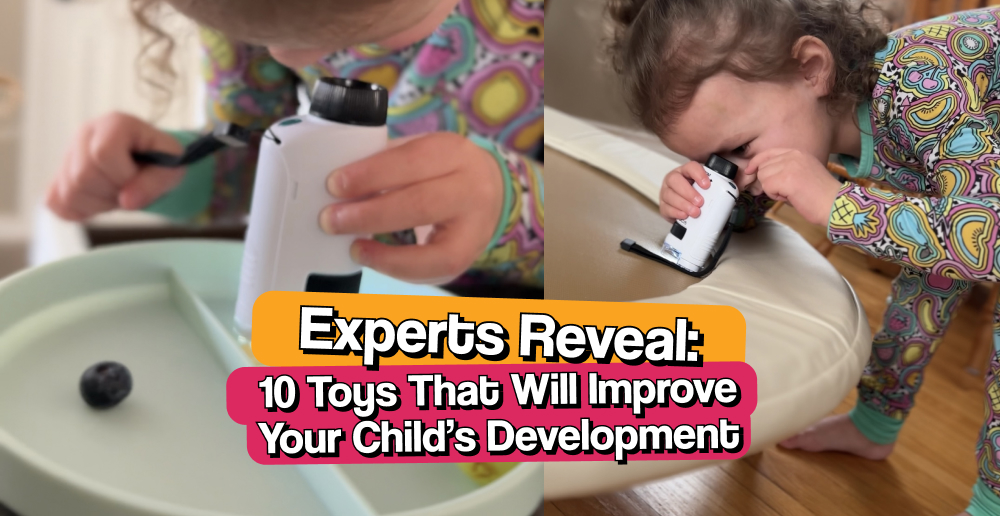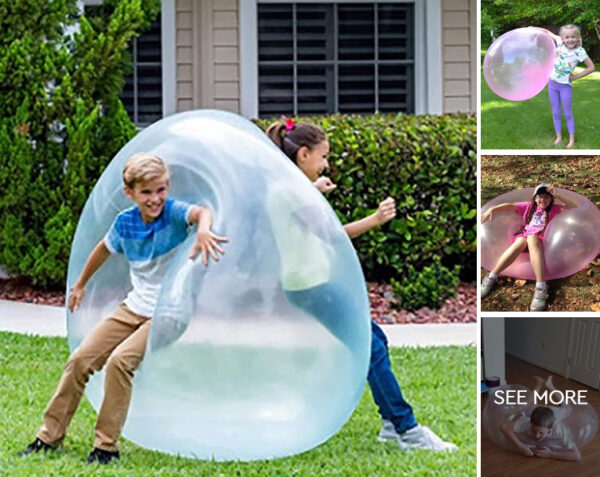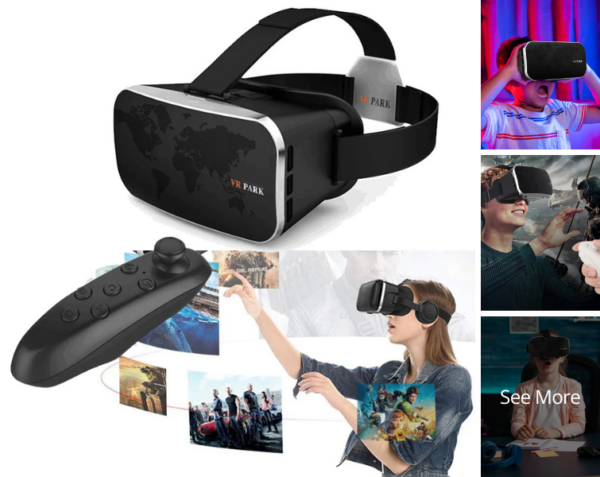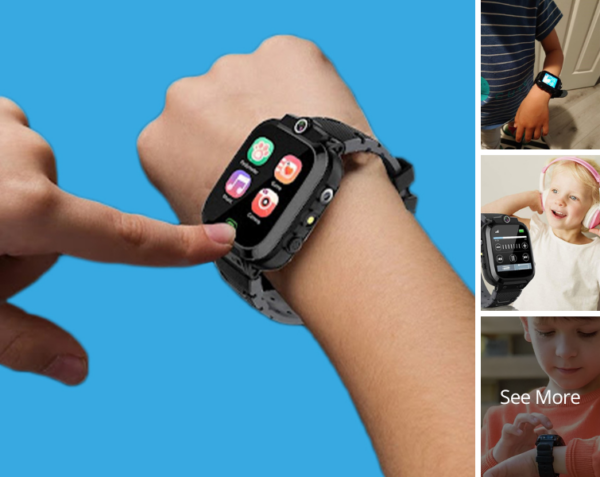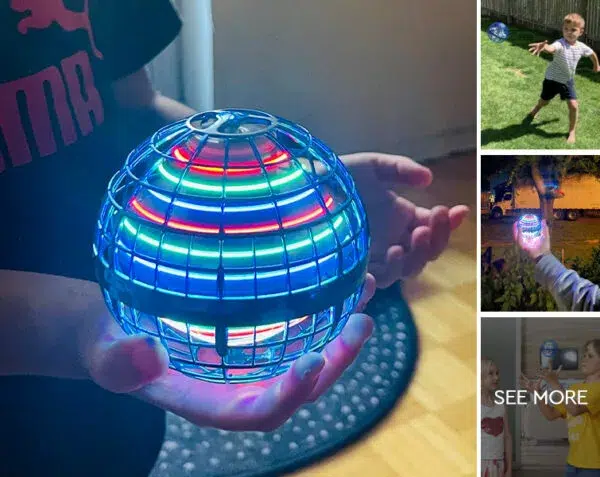Advertorial
10 Toys That Counter Screen Time Effects (Proven by Child Development Experts)

Written by
Emily W.
After noticing my kids were spending more time staring at screens than exploring the world around them, I became determined to find toys that could genuinely compete with digital entertainment. What I discovered through conversations with pediatricians, occupational therapists, and child development specialists was eye-opening.
The reality is that excessive screen time can impact developing brains in measurable ways—from reduced attention spans to weakened fine motor skills. But the good news? Experts consistently recommend specific types of hands-on play that can help restore balance and support healthy development.
These aren’t just my opinions—these recommendations come straight from professionals who understand how tactile, creative, and social play strengthens growing minds. Today I’m sharing 10 expert-recommended toys that successfully draw kids away from screens while building crucial developmental skills.
⭐⭐⭐⭐⭐ 2,004 5-star reviews
“I got the giant balloon for my grandson’s birthday. He was shocked!!! The look on his face was priceless. He’s OBSESSED with this thing. So far it’s lasted a year without any damage.” – Susan
The first time I saw my son bouncing around with this balloon ball, I knew we had found something special. Dr. Ramirez, a pediatric physical therapist, explained why it’s so effective at pulling kids away from screens.
Why It Works Against Screen Time:
- Engages the whole body – impossible to use while looking at a screen
- Develops gross motor skills that screen time doesn’t address
- Provides unpredictable movement that keeps kids mentally engaged
- Encourages outdoor play and social interaction
⭐⭐⭐⭐⭐ 2,101 5-star reviews
“My grandson has been glued to this miniscope since the day he got it. He’s outside every afternoon looking at bugs, plants, and even the texture on leaves. It’s incredible to see him so curious and excited to learn!” – Karen K.
The day I brought home The Original Miniscope, our backyard became a research station. Dr. Foster, a science education specialist, explained why hands-on scientific exploration is so crucial for screen-heavy kids.
Why It Works Against Screen Time:
- Develops real scientific observation skills beyond video watching
- Encourages outdoor exploration and nature connection
- Builds patience and focus through detailed examination
- Sparks genuine curiosity about the physical world
⭐⭐⭐⭐⭐ 2,103 5-star reviews
“My littlest has trouble making friends. She’s painfully shy. I got her these walkie-talkies and it’s attracted kids from all over the neighborhood. I’ve never seen my daughter this happy. I tear up whenever I see them. ” – Bonnie
These simple communication devices transformed our kids’ social interactions. Dr. Garcia, a child psychologist specializing in social development, explained their unique power.
Why It Works Against Screen Time:
- Requires real-time social interaction instead of virtual connection
- Builds conversation skills through turn-taking and listening
- Encourages outdoor exploration and physical activity
- Creates genuine friendships through shared adventures
⭐⭐⭐⭐⭐ 3,127 5-star reviews
“My granddaughter loves her LittleLens camera! She takes it everywhere and I love seeing the world through her eyes. The pictures aren’t professional quality, but her creativity and the fun she has are priceless.” – Helen R.
This kid-friendly camera gets children creating rather than consuming. Dr. Walsh, a child photography educator, helped me understand why active content creation builds crucial developmental skills.
Why It Works Against Screen Time:
- Transforms kids from passive consumers to active creators of visual content
- Develops hand-eye coordination and spatial awareness
- Encourages outdoor exploration and real-world observation
- Includes built-in games and filters for creative learning
⭐⭐⭐⭐⭐ 2,156 5-star reviews
“At first I was hesitant about VR for my grandson, but this headset is different. The educational content is amazing – he’s exploring ancient Egypt and learning about space! It’s like having field trips right in our living room.” – David K.
This educational VR headset transformed our understanding of immersive learning. Dr. Rodriguez, a virtual reality education researcher, explained why structured VR experiences differ fundamentally from passive screen time.
Why It Works Against Screen Time:
- Creates active exploration through immersive educational environments
- Promotes experiential learning that boosts knowledge retention by 75%
- Encourages physical movement and spatial awareness
- Builds empathy and curiosity through virtual field trips
⭐⭐⭐⭐⭐ 2,231 5-star reviews
“I’m officially deemed “The Grandma with the best gifts”. My granddaughter thinks this is the greatest thing ever. It’s a music/audiobook player that doesn’t need WiFi to operate. It makes kids feel more grown up without worrying about internet exposure.” – Francis
In our house, screen time battles were constant until we discovered this audio-only device. Dr. Williams, a speech-language pathologist, explained why audio-only content is so powerful.
Why It Works Against Screen Time:
- Eliminates visual overstimulation while maintaining engagement
- Strengthens listening skills without visual distractions
- Sparks imagination as kids create mental imagery
- Extends attention spans through longer listening sessions
⭐⭐⭐⭐⭐ 2,892 5-star reviews
“My grandson loves his smartwatch! It has 14 different games and even tracks his steps. He feels so grown-up wearing it, and I love that it encourages him to be active instead of sitting with a tablet all day.” – Carol
When we introduced this multi-functional smartwatch, it immediately became a healthy tech alternative. Dr. Johnson, a pediatric wellness specialist, explained why wearable tech promotes better habits than passive screen use.
Why It Works Against Screen Time:
- Encourages physical activity through built-in pedometer and fitness tracking
- Provides bite-sized learning through 14 educational games
- Develops practical skills with calculator and toolkit functions
- Promotes active engagement rather than passive consumption
⭐⭐⭐⭐⭐ 2,347 5-star reviews
“This robot has been such a game-changer! My daughter asks it a million questions and gets thoughtful answers every time. It’s like having a super-smart friend who’s always ready to teach and play. She’s learning without even realizing it!” – Jennifer L.
This AI-powered learning companion revolutionized our approach to educational play. Dr. Thompson, a STEM education researcher, explained why interactive AI robots are superior to passive screen consumption.
Why It Works Against Screen Time:
- Promotes active conversation instead of passive watching
- Develops critical thinking through interactive Q&A sessions
- Encourages social skills through karaoke and group activities
- Builds STEM confidence through personalized learning pace
⭐⭐⭐⭐⭐ 2,907 5-star reviews
“When I got this ball for my grandson, he threw his arms around me like I was his favorite person in the world. I’ll never forget that moment, especially since kids at that age are hard to connect with since they’ve got their games and whatnot. ” – Dan
This fascinating light-up orb became an instant hit, but Dr. Chen, a pediatric neurologist, helped me understand why it’s particularly effective for screen-heavy kids.
Why It Works Against Screen Time:
- Requires active participation rather than passive watching
- Builds hand-eye coordination through physical interaction
- Provides immediate tactile feedback that screens can’t match
- Creates social play opportunities that draw kids together
⭐⭐⭐⭐⭐ 2,101 5-star reviews
“People always say how smart my 2-year old grandson is. His daycare teacher asked what we were doing at home because she catches him spelling his name. It’s because of the Montessori board, I’m sure of it.” – Frank
This personalized wooden puzzle quickly proved that learning doesn’t need a screen. Ms. Peterson, a Montessori educator, explained why tactile learning is so superior to digital alternatives.
Why It Works Against Screen Time:
- Provides multi-sensory learning through touch, sight, and movement
- Builds fine motor skills that touchscreens don’t develop
- Creates personal connection through customization
- Encourages independent exploration without external stimulation
Screen time isn’t inherently harmful, but balance is crucial. These 10 toys have consistently proven their ability to capture children’s attention while building skills that screens simply can’t develop—from fine motor control to face-to-face social interaction.
The key is offering alternatives that are genuinely more engaging than digital entertainment. Every toy on this list has passed the ultimate test: kids choose them over screens voluntarily.
As Dr. Martinez, a pediatric developmental specialist, told me: “The goal isn’t to eliminate technology, but to ensure children have rich, varied experiences that support all areas of development. These types of hands-on, interactive toys provide exactly what growing brains need to thrive in our digital world.”
